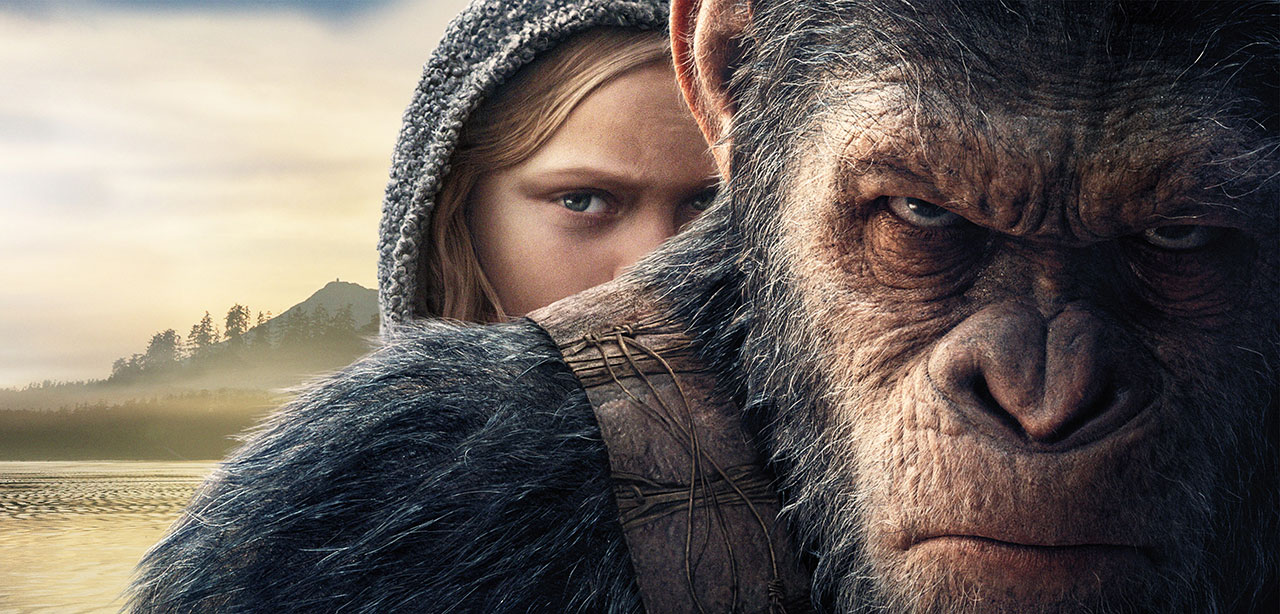‘War for the Planet of the Apes’ for destiny
We’ve come a long way since “Bedtime for Bonzo” (1951). “War for the Planet of the Apes” is the third in the current trilogy beginning with James Franco’s pet chimp, Caesar, going bananas in an “overly-successful” lab experiment. This series further aligns the circumstances of the prequels to the original “Planet of the Apes” (1968) with Charlton Heston.
Based on Pierre Boulle’s 1962 novel “La Planete des Singes,” studios learned monkey business is a serious topic with audiences. So this is the ninth “Planet of the Apes” movie. Using motion-capture technology, Director Matt Reeves, co-writing with Mark Bombeck, return with the requisite action scenes, heartfelt characters and rich social commentary.
Andy Serkis (“King Kong”) is once again, the man behind the “mask.” Although Caesar is able to speak, it’s Serkis’ expressive eyes, stern gazes and subtle body language that allows him to deliver such resounding messages with minimal wasted motion. In this round, Caesar and his apes (chimps, gorillas and orangutans) are forced into a deadly conflict with an army of panicked humans, led by a ruthless Colonel (Woody Harrelson).
Harrelson plays the role less as an evil autocrat, than as a pragmatic decision-maker. While many are conflicted with difficult decisions regarding the fate of humanity, the Colonel wraps his clarity of purpose in our flag. Believing chimps are chumps, the Colonel slaughters the apes in order to protect his own species, “There are times when it’s necessary to abandon our humanity to save humanity!” Possibly, a future politician?
As the apes suffer unexpected brutality by the Colonel and his troops, Caesar is overcome by his darker instincts. Although he didn’t draw first blood, he declares, “I did not start this war, but I will finish it!” He angrily changes course from leading his apes to a new home to begin his own quest of avenging lost friends and family.
With very deliberate pacing, the slow but steady build explores the epic journey. Along the way, Caesar and his team encounter an anxious chimp called “Bad Ape” (Steve Zahn). Escaped from a zoo, Bad Ape is having more fun than a barrel of, uh, you know. He reluctantly agrees to lead Caesar to the Colonel for a day of reckoning.
The stakes are even higher than completion of the pickle ball courts. The consequences could determine the fate of both species as well as the future of the planet. The journey brings Caesar and the Colonel face-to-face in the Colonel’s prisoner of war slave camp. They are pitted against each other in what will be a classic battle of wits and force.
We’re fascinated with both the artistry as well as the characters. Director Reeves trusts the audience to think about outcomes for each character as well as each species. The questions go beyond good versus evil on both the micro and macro levels.
Harrelson has become one of the most adept actors in the business, but Serkis, in yet another non-human role, is superb as the resilient, intelligent and charismatic leader. He brings moral gravitas, vulnerability and heartbreak to his struggle for survival during the human and ape transformation and revolution. Not just another gorilla in the midst, Serkis has created one of the most iconic characters in movie history. Hail Caesar!
“War for the Planet of the Apes” is 140 minutes and rated PG-13. The “Ape” series has now become one of the longest running and most absorbing sci-fi franchises. Not being big fans of the original five sequels, we can hardly believe we’re now anxious for more. Although not official, the studio is all over that like ugly on an ape.
It’s interesting that as the primates become more intelligent in each movie, the technology evolves at a corresponding rate. The fact that we root for the apes as much or more than the humans should feel blasphemous or even treasonous. However, the lesson is that it’s not so much the species as the humanity.
Ron’s Rating: B Leigh’s Rating: A-
Previous Article
Seniors invited to enjoy free spaghetti dinner


 April 19, 2024
April 19, 2024